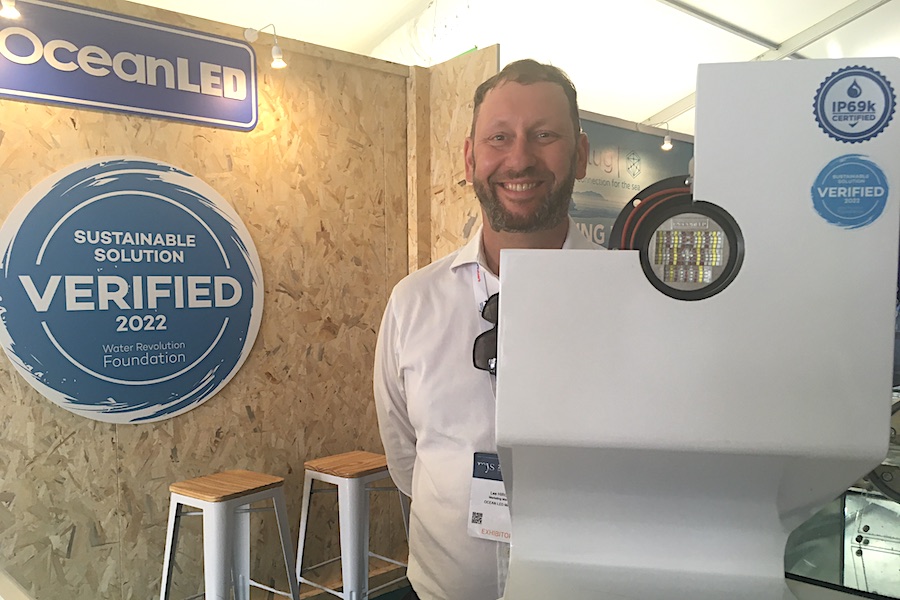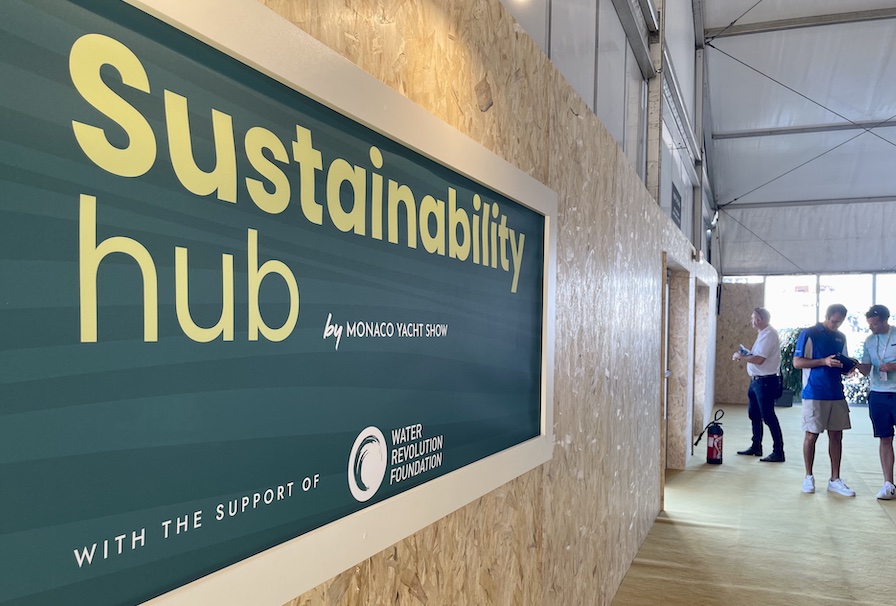Love and marriage, horse and carriage, and now, superyacht and sustainability: bonded at the hip, paired for life, you can’t have one without the other.
Sustainability is this year’s MYS buzz word.
If you blink in the Darse Sud Exhibition Tent you might miss the sustainability ‘suite’, but “It’s a step in the right direction”, clamours this 14-stand strong army of exhibitors. And, what they might lack in numbers they make up for in enthusiasm: This corner is busting to save the earth and seas and has (some) of the wherewithal to make it happen.
Monaco Life pulled back the tent flaps and ventured inside to discover some of the innovative solutions on offer and learn what they mean for the future of yachting.
Hello Hydrogen
‘It’s time to shift’ is the rallying cry of EODev (Energy Observer Developments). This business, created in 2019, draws on the experience accumulated on board the 30.5 metre vessel, Energy Observer – the first hydrogen-powered, zero-emission vessel to be self-sufficient in energy.
EODev presents the RexH2, an onboard hydrogen fuel cell power generator. It has a footprint of one cubic meter and weighs 540 kilograms, which, for the non-scientific among us, is not very much.
Business Developer Fernando Szabados explains: “Basically, we produce hydrogen based on fuel cell technology supplied by Toyota and adapt it to our products. They have been using this technology for decades and they know how to use it and its nature. We integrated the product into the Energy Observer in 2019 and she’s been navigating now for two years with no failures.”
Right now, the biggest boat that can be powered this way is a 30m, “But”, says Szabados, “We can supply power for bigger boats, for ‘hotel load’, which means overnight power when the vessel is not moving. Simply put, this can replace a diesel generator with no emissions, because we use hydrogen which can be produced in a totally renewable way; what we call ‘green hydrogen’. So even in the process of producing hydrogen there are no emissions. It can be used to go to protected areas with zero emission navigation.” The company is currently working on different sizes of power unit, bigger units for bigger and smaller units for smaller yachts. “The greatest challenge we have right now is for hydrogen storage, because it’s quite voluminous.”

Drastic plastic
Chris Desai used to work on yachts, but during a yachtmaster course decided he wanted to work to save the sea rather than sail on it. So, he founded the charity UOCEAN 2050. “We believe we can mitigate the plastic and carbon footprint of the yachting industry,” explains Desai. “We think the yachting industry should drive the change because yachts are on the ocean and enjoy its nature. Our aim is to minimise the plastic footprints of yachts and make sure it doesn’t reach the sea.” The charity missions are, by 2030, to remove a billion kilos of marine plastic (they are currently 330,000 kilos in), and restore the abundance of the oceans by 2050.
The charity encourages plastic clean-ups throughout the world: rivers, canals, beaches, and engaging schools and all types of communities. Desai explains, “It’s about getting people who have never had access to conservation to get involved at a grass roots level to protect their communities.”
“Unsustainable practices on superyachts have to stop,” he insists, “And there is no reason why they cannot adapt to a more sustainable model by reducing their plastic and off-setting their plastic, emissions etc.”
The charity offers and is conducting an audit service for yachts on the plastic and carbon usage and work with the yachts to find alternatives.
Track Back
The Water Revolution Foundation has some hefty industry supporters with some hefty projects. The Board of Directors includes superyacht industry heavyweights such as Henk de Vries III, Chairman of De Vries Scheepsbouw, who also have a 50% share of Feadship, yacht designer Philippe Briand, and Peter Lürssen of Lürssen Yachts. They are partnered with doctors in sustainable development, marine biology and science. The aim is to track, understand and change the impact of yachts on the environment.
Their work is a study in the collective term for initialisms, but no less relevant for it.
Explains Dr Elisabetta Zerazion: “YETI (Yacht Environmental Transparency Index) will be launched at METS 2022 in November this year. It offers owners the possibility to compare their superyacht by its environmental credentials and get a YETI score.” Other innovations include a Database of Sustainable Solutions (DOSS) to have sustainable solutions verified by a third party, and perhaps the most exciting is IMMA (Important Marine Mammal Areas). This allows yachts to identify, give clear passage and react responsibly to marine life locations and behaviour.

Lights please
OceanLED Marine are all about lights. Lee Hirons points out the Sustainable Solution Verified certificate from the Water Revolution Foundation. “We are one of the first to get this verification and we are very proud. One of the main features of our lights are the optics. They give the best beam and water penetration possible. A lot of our competitors do not use optics they just push a lot of power through. We don’t have to use so much power through the lights.” Because of the reduced heat, the lights can also be smaller and therefore created with less material, another sustainable factor.
Monaco Life emerged from the tent enlightened and inspired. Go peek.
